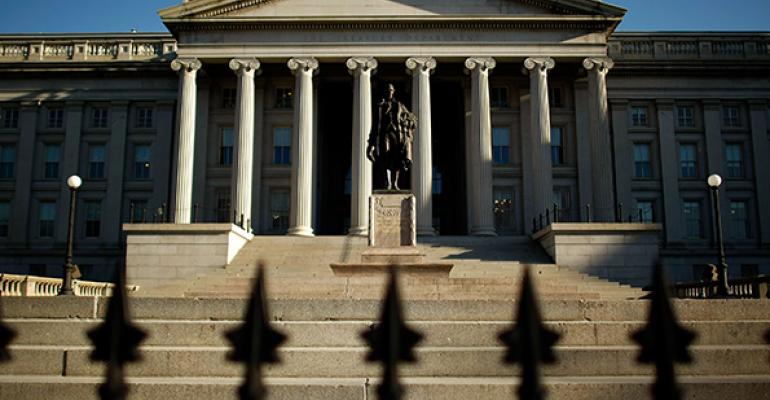By Luke Kawa
(Bloomberg) --Call it a local bond market buffet.
American buyers have been gorging on corporate debt after also stepping up their presence in the Treasury market. As such, investment grade credit spreads remain tight by historical standards largely thanks to a resurgence in U.S. retail enthusiasm as international demand wanes.
"The real delta in terms of demand for U.S. investment grade credit this year is not any particular foreign buyer base, but instead the domestic mutual fund and exchange-traded fund segment, which is enjoying a banner year of inflows," wrote Wells Fargo Securities strategists led by Nathaniel Rosenbaum in a recent note. "These funds have garnered over $100 billion in just four months, almost double the prior record for this point in the year."
While institutional players have been making greater use of ETFs, the vehicles associated with these inflows point to buying from individual investors as a major source of support for U.S. corporate credit.
This pickup in domestic demand has been sorely needed: The six-month moving average for net monthly foreign purchases of U.S. corporate debt has declined to less than $5 billion, its lowest level since October 2014.

The so-called "electronics for bonds" trade -- how Bank of America Merrill Lynch has characterized the U.S. trade deficit in this consumer goods segment and its mirror image, foreign bond purchases -- has been losing some of its luster due to relatively elevated hedging costs. This has added to worries that the asset class, facing slipping fundamentals and uncertain effects of tax reform on demand and issuance activity, may be prone for a correction.
"We have argued since the end of last year that the record foreign demand for U.S. credit observed in 2016 is unlikely to recur in 2017, as we expected divergent central bank policies to begin a gradual convergence, led by a resurgent euro-zone economy," the analysts wrote. "In our view, foreign demand is very tightly linked to the USD, whereby a high (or rising) dollar is positive for foreign demand and conversely a weak (or falling) dollar is negative for foreign demand."
Wells Fargo anticipates that demand for U.S. credit will pick up in Japan, but remain more subdued in Europe. However, based on their analysis, the U.S. Dollar Index would have to break below 87 -- roughly 13 percent downside from currently levels -- to elicit foreign selling.
One scenario that could push both domestic and foreign buyers away from the asset class, according to Rosenbaum, would be too much good news from the rest of the world.
"The real risk is that rates go higher, but the dollar goes lower," he said in a telephone interview. "And I would argue you’ve seen a small illustration of that year-to-date."
According to the strategist, a more aggressive hawkish bias from the European Central Bank -- amid ebbing political risks and a steady, broadening economic recovery on the continent -- could potentially prompt such a backdrop to be realized.
To contact the reporter on this story: Luke Kawa in New York at [email protected] To contact the editors responsible for this story: Jeremy Herron at [email protected] Dave Liedtka, Randall Jensen





